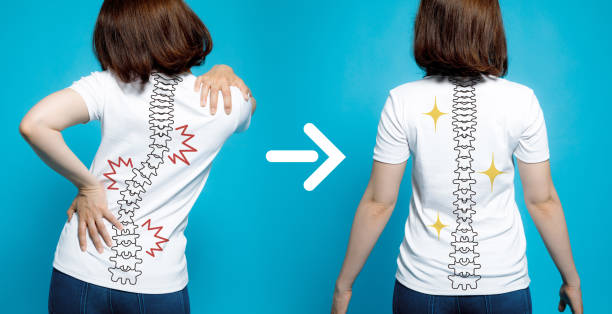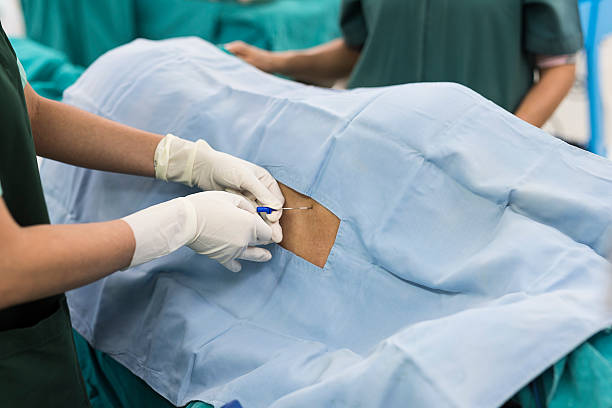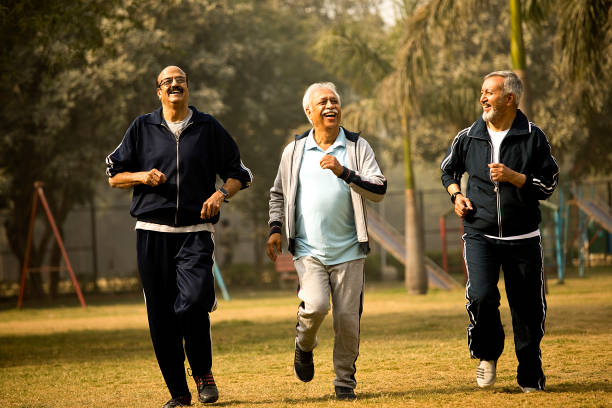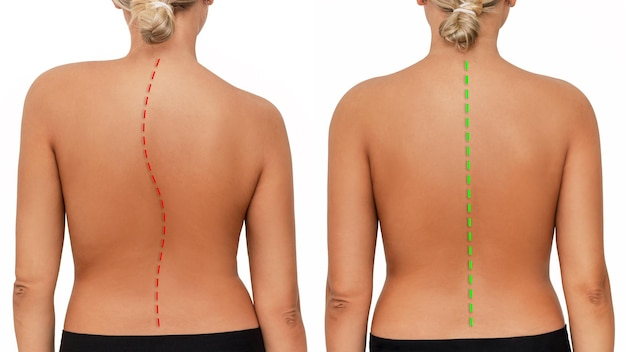Reaching the 20-year mark after scoliosis surgery adds a significant chapter to your health story. After careful treatment, the initial recovery challenges gradually get better. You will probably feel more flexible, experience less pain, and enjoy an overall better life. The surgery that aligned your spine has a pivotal role in keeping you on this positive path.

“Most people can handle their daily activities quite well. However, it is important to stay vigilant,” advises Dr. Raveesh Sunkara, recognised as the best neurosurgeon in Hyderabad. “The body’s resilience and improved surgical methods highlight the potential for a satisfying and healthy life 20 years after scoliosis surgery.”
“With expert guidance, your journey becomes a testament to the long-term success achievable after scoliosis surgery. You can gain a life filled with strength, balance, and lasting health.”
Wondering about a normal life post-surgery? Uncover insights that reveal the possibilities that await beyond the 20-year mark.
Can I live a Normal Life 20 Years after Scoliosis Surgery?
Two decades post-scoliosis surgery, living a normal life is not just possible but a reality for many. Studies show that over 90% of individuals who had scoliosis surgery experience significant improvements in their quality of life. You’ll likely find yourself engaged in routine activities, pursuing your passions, and enjoying a fulfilling life.

The surgical intervention aims to correct spinal curvature. It allows for better posture, reduced pain, and improved overall function. According to long-term follow-up studies, over 80% of patients report sustained pain relief and improved mobility even after years.

It’s important to note that the success of post-surgery life often depends on various factors, including:
- patient’s commitment to rehabilitation exercises
- adherence to medical advice
- overall health
Regular check-ups with specialists, like Dr. Raveesh Sunkara, a prominent neurosurgeon in Hyderabad, help address potential issues early on.
For personalized guidance and support, consult Dr. Raveesh Sunkara. Discover your path to lasting wellness. Book an appointment now!
Curious about the long-term journey? Learn what awaits you on the road ahead.
What to Expect 20 Years After Scoliosis Surgery?

1. Sustained Relief:
After 20 years, expect a remarkable reduction in the chronic pain that led you to opt for scoliosis surgery. The surgery’s impact on pain relief tends to be enduring. It provides a significant improvement in your overall quality of life.
2. Physical Freedom:
Anticipate physical freedom you might not have thought possible before the surgery. Engaging in once-challenging activities becomes more feasible as your spine stabilizes over time.

3. Posture Perfection:
Your posture will likely remain improved. This contributes to a confident and comfortable daily stance. The corrective measures taken during the surgery tend to stand the test of time. This helps maintain the alignment achieved during the procedure.
4. Emotional Well-being:
Over the years, you’ll find that the emotional toll of scoliosis diminishes. Coping with the challenges and adjustments post-surgery gradually becomes second nature. This contributes to improved emotional well-being and a positive mindset.
5. Daily Activities:
Whether it’s work, hobbies, or simple chores, expect to perform daily activities with ease. The surgery should empower you to lead a normal life without the limitations that scoliosis may have imposed in the past.
6. Potential Complications:
While uncommon, it’s important to be aware of potential complications that may arise. Keep an eye out for any new symptoms. Don’t hesitate to consult your healthcare provider if you notice anything unusual or changes in your condition.
7. Lifestyle Adaptations:
Some lifestyle adaptations may persist. This may include exercises or postural habits suggested by your healthcare team. However, these adjustments become ingrained into your routine. They can contribute to the long-term success of the surgery.
8. Follow-up Care:

Regular follow-up appointments with your healthcare provider remain crucial. Monitoring the stability of the surgical correction ensures any potential issues are addressed promptly. Staying proactive with check-ups is key to maintaining your spinal health.
Remember, each individual’s journey is unique. These general expectations can guide you towards a positive and informed perspective on what to anticipate 20 years after scoliosis surgery.
If you have specific concerns or questions about your journey, Dr. Raveesh Sunkara is here to guide you. Explore your expectations with our expert. Schedule a consultation now.
Experiencing discomfort? Let’s delve into the common reasons behind post-surgery back pain.
Why does my Back Hurt Years after Scoliosis Surgery?

1. Wear and Tear:
× Your back might hurt due to normal wear and tear on the spine over the years.
× Despite surgery, the spine is still susceptible to age-related changes.
2. Adjacent Segment Degeneration (ASD):
× ASD is a common culprit for post-surgery discomfort.
× The segments adjacent to the fused area may undergo stress and degeneration, causing pain.
3. Muscle Imbalance:
× Surgery alters the spine’s biomechanics. It can lead to muscle imbalances.
× These imbalances can strain muscles, causing back pain.
4. Hardware-related Issues:
× Hardware used in surgery can cause issues.
× Screws or rods may loosen or irritate nearby tissues, triggering pain.
5. Scar Tissue Formation:
× Scar tissue can develop around the surgical site.
× Over time, this scar tissue might lead to stiffness and discomfort.
6. Incomplete Fusion:
× In some cases, fusion might not fully occur.
× Incomplete fusion can result in ongoing pain and instability.
7. Nerve Compression:
× Nerves near the surgery site may become compressed.
× This compression can cause radiating pain down the back or legs.
8. Arthritis Development:
× Post-surgery, arthritis might develop in adjacent joints.
× Arthritic changes can contribute to chronic back pain.
9. Poor Posture and Mechanics:
× Adopting poor posture or body mechanics can strain the spine.
× Being mindful of posture is crucial for preventing pain.
10. Rehabilitation Gaps:
× Inadequate rehabilitation or lack of exercise can lead to weakened muscles.
× Strong muscles are vital for supporting the spine and reducing pain.
11. Lifestyle Factors:
× Your lifestyle choices matter.
× Factors like obesity and smoking can impact post-surgery back health.
“Your journey after scoliosis surgery involves various factors. Persistent pain warrants a visit to a spine specialist,” advises Dr. Raveesh Sunkara. “A thorough evaluation helps identify the specific cause and guides appropriate interventions. Identifying the root cause of your back pain is crucial for tailoring effective solutions.”
Don’t let back pain hinder your life. Consult our expert for personalized solutions.
Seeking reassurance? Explore the success rates of scoliosis surgery. Gain confidence in the positive outcomes achieved by many.
What Percentage of Scoliosis Surgery is Successful?

When it comes to scoliosis surgery, success rates are notably high. On average, about 80-90% of patients experience successful outcomes. The procedure aims to correct spinal curvature and alleviate associated symptoms. It provides significant relief for the majority of individuals.
Success depends on various factors such as:
- the severity of the condition
- the patient’s overall health
- adherence to post-operative care
“With advanced techniques and medical expertise, scoliosis surgery is a reliable and effective option for those seeking lasting relief from spinal deformities,” says Dr. Raveesh Sunkara, a renowned expert in minimally invasive spine surgery in Hyderabad.
If you’re considering surgery, connect with Dr. Raveesh Sunkara to discuss your case and understand the potential success of your specific situation.
Concerned about permanent restrictions? Understand the long-term effects of scoliosis treatments. Discover how individuals have adapted to live fulfilling lives.
What are the Long-term Effects or Permanent Restrictions After Scoliosis Surgery?
1. Physical Activity:
× Many individuals resume regular physical activities after surgery.
× High-impact sports might be a no-go. But low-impact exercises are generally good to go.
× Think swimming, walking, or Yoga for that perfect balance.
2. Flexibility and Movement:
× There might be a slight reduction in spine flexibility post-surgery.
× It’s usually not a major hurdle in daily activities.
3. Occupational Considerations:
× Most people can return to their regular jobs without significant issues.
× However, certain physically demanding professions might need a closer look.
4. Pregnancy:
× Planning to start a family? Well, that’s usually not a problem after scoliosis surgery.
× Discuss with your doctor for personalized advice based on your case.
5. Pain Management:
× Chronic pain is often greatly reduced post-surgery.
× Some individuals might experience occasional discomfort. However, it is usually manageable.
6. Regular Check-ups:
× Follow-ups are your friend! Regular check-ups help monitor your spine’s health.
× It’s like preventive maintenance for your back.
7. Lifestyle Adjustments:
× While there are usually no drastic lifestyle changes, maintaining a healthy lifestyle is a win-win.
× A balanced diet and staying active can contribute to overall well-being.
Remember, everyone’s journey is unique. Your doctor’s advice is crucial for guiding you through the specifics of your post-surgery adventure. So, embrace life, stay active, and keep those regular check-ups on your radar!
Get personalized insights into your scoliosis treatment. Consult Dr. Raveesh Sunkara, often known as the best neurosurgeon in Hyderabad.
Considering the future impact? Let’s explore how scoliosis surgery influences life in the later years.
How does Scoliosis Surgery Affect You Later in Life?

1. Improved Quality of Life:
· Scoliosis surgery often leads to a significant improvement in your overall quality of life.
· Reduction in pain and discomfort allows for greater freedom of movement.
2. Enhanced Physical Function:
· The surgery helps restore proper spinal alignment. It promotes better posture and balance.
· Improved physical function contributes to increased mobility and a more active lifestyle.
3. Long-Term Stability:
· Scoliosis surgery aims for long-term stability. It prevents further progression of the spinal curvature.
· This stability is crucial for maintaining a healthy and pain-free back as you age.
4. Postoperative Rehabilitation:
· Engaging in postoperative rehabilitation exercises is essential.
· These exercises contribute to strengthening the core muscles. They also support the spine’s stability.
5. Potential Complications:
· While rare, potential complications from surgery can occur. These include infection or hardware issues.
· Regular follow-ups can help monitor and address any concerns promptly.
6. Resilience and Adaptation:
· Over time, individuals tend to adapt well to any residual limitations post-surgery.
· Resilience becomes a key factor in adjusting to the changes and maintaining a positive outlook.
Regular check-ups with your healthcare team, including specialists like Dr. Raveesh Sunkara, ensure ongoing monitoring and timely interventions if needed. Following professional advice contributes to a smoother journey post-surgery.
Conclusion
Navigating life 20 years after scoliosis surgery is a unique journey for each individual. It is a testament to the courage of individuals undergone this surgical path and the expertise of professionals like Dr. Raveesh Sunkara. By staying informed, seeking professional guidance, and embracing a proactive approach, individuals can lead rich, fulfilling lives two decades beyond the bend.
Shape your future after scoliosis surgery. Connect with us for personalized guidance and support.
Still have questions? Explore our FAQ section for more information on living your best life years after scoliosis surgery.
Frequently Asked Questions:
1. How long does it take to recover fully from scoliosis surgery?
The recovery timeline varies. However, many people return to their routine activities within a few months. Full recovery may take up to a year. Consistent rehabilitation exercises are crucial in expediting the process.
2. Is scoliosis surgery the only treatment option available?
Scoliosis surgery is considered when other treatments like bracing or physical therapy haven’t provided sufficient relief. Non-surgical options are explored first. Surgery is recommended based on the severity of the curvature and the impact on the individual’s quality of life.
3. Are there different scoliosis surgery types?
Yes, surgical interventions for scoliosis include:
- spinal fusion
- instrumentation
- correction techniques
The choice depends on several factors. These include the severity of the curve, the patient’s age, and overall health.
4. How does minimally invasive scoliosis surgery differ from traditional surgery?
Unlike traditional methods, minimally invasive surgery employs smaller incisions and specialized instruments to treat scoliosis. This approach reduces postoperative pain and accelerates the overall recovery process.
5. How frequently should one undergo physical therapy for scoliosis?
The frequency of physical therapy sessions depends on individual needs and the severity of scoliosis. Regular sessions, combined with home exercises, contribute to the effectiveness of the treatment.
Reference links:







